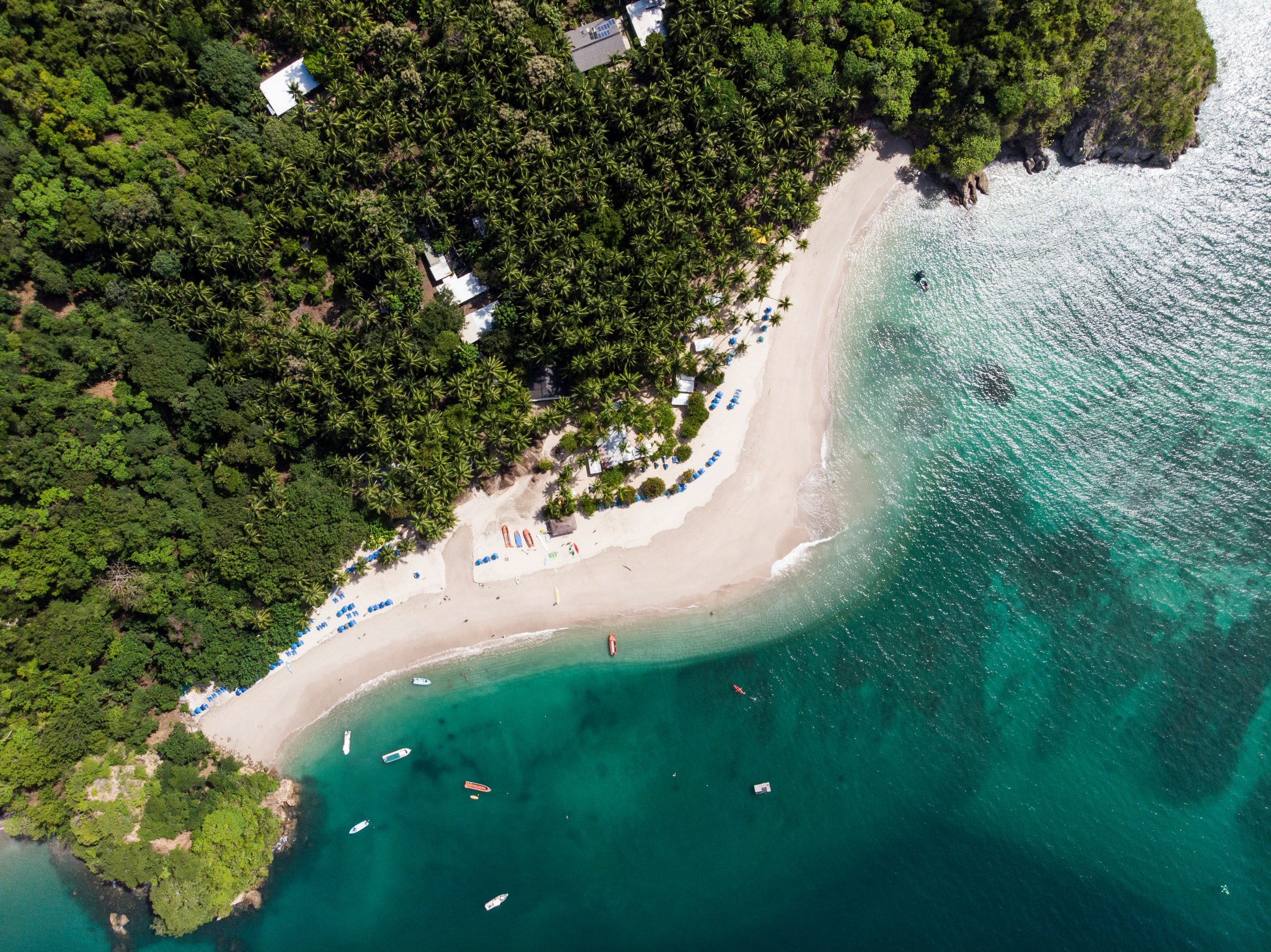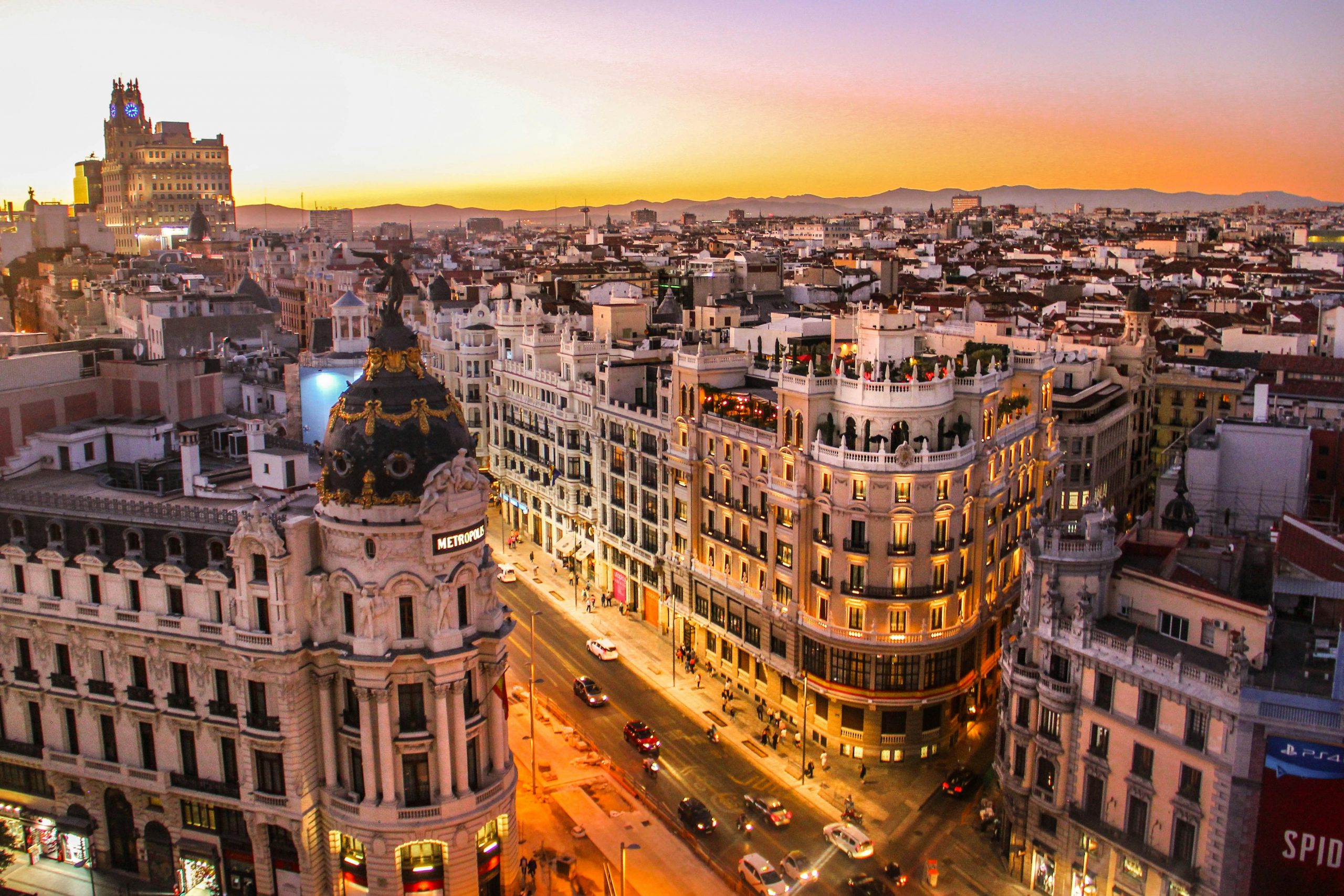✈️ Introduction
Imagine working from a hammock with the sound of waves in the background, finishing your calls just in time for a sunset surf session. This is exactly what Costa Rica promises to digital nomads: a blend of tropical lifestyle, stable infrastructure, and legal stay options.
In 2022, Costa Rica introduced its Digital Nomad Visa to attract international professionals earning income abroad. The program quickly became one of the most popular visa options in Latin America. Now in 2025, it has matured into a reliable choice for remote workers who want to live legally in Costa Rica for up to two years.
This guide covers everything you need to know about Costa Rica’s Digital Nomad Visa:
- Who qualifies and eligibility requirements
- Minimum income thresholds & financial proof
- Application process, fees, and documents
- Living costs & best cities for nomads
- Benefits, challenges, and renewal options
- Family inclusion rules
- FAQs for 2025 applicants
By the end, you’ll have a complete roadmap to decide if Costa Rica is the right destination for your remote work journey.
👤 Who Qualifies for Costa Rica’s Digital Nomad Visa
The Digital Nomad Visa (officially called the Stay for Remote Workers and Service Providers) is designed for:
- Freelancers who provide services to international clients.
- Remote employees working for companies outside Costa Rica.
- Entrepreneurs and self-employed professionals whose income comes from abroad.
You are likely to qualify if you:
- Earn a consistent income of at least $3,000/month (or $4,000/month with dependents).
- Have health insurance that covers your entire stay.
- Can prove your income with bank statements, contracts, or pay slips.
- Plan to stay in Costa Rica while continuing to work remotely for non-Costa Rican clients.
You are unlikely to qualify if you:
- Rely on Costa Rican companies for your main income.
- Cannot prove consistent earnings over the past year.
- Do not have valid health insurance.
- Are looking for local employment instead of remote work.
This visa is not meant for job-seekers; it’s specifically for remote workers with foreign-sourced income.
📋 Eligibility Criteria & Income Requirements (2025)
Costa Rica’s Digital Nomad Visa has clear rules to ensure applicants are financially stable.
Basic Criteria
- Valid Passport: Must cover the full visa period.
- Remote Work Proof: Contracts, employment letters, or freelance invoices.
- Health Insurance: Coverage for the applicant (and dependents, if any) for the full duration.
- Clean Criminal Record: No serious offenses.
- Accommodation Proof: Lease, rental agreement, or planned residence.
- Entry Stamp: If applying from within Costa Rica, proof of legal entry is required.
Income Thresholds (2025)
- Individual applicant: $3,000 USD per month.
- With dependents: $4,000 USD per month.
Financial Proof
- Bank statements from the last 12 months.
- Employer or client contracts showing ongoing work.
- A notarized affidavit may be required to certify income sources.
Dependents Allowed
You may include:
- Spouse or partner
- Children under 25 who are financially dependent
- Elderly parents who are financially dependent
But you must meet the higher income threshold ($4,000/month).
✅ Quick Eligibility Checklist
- Do you earn at least $3,000/month ($4,000 with family)?
- Can you prove your income with official documents?
- Do you have valid health insurance?
- Is your work remote and international (not local)?
- Do you have a valid passport and clean criminal record?
👉 If you answered “yes” to all, you are a strong candidate for Costa Rica’s Digital Nomad Visa.
Application Process, Documents, Fees & Timelines
🛠️ Step-by-Step Application Process
Applying for Costa Rica’s Digital Nomad Visa is relatively straightforward compared to some countries, but precision is key. Here’s the 2025 breakdown:
1. Confirm Your Eligibility
- Make sure you meet the $3,000–$4,000 monthly income requirement.
- Get health insurance that covers you (and dependents) in Costa Rica.
- Prepare proof of ongoing remote work (contracts, invoices, letters of employment).
2. Gather Required Documents
- Collect bank statements, contracts, and legal documents (marriage/birth certificates if including family).
- Have documents translated into Spanish if required.
- Some documents must be apostilled or legalized.
3. Submit Application
- Applications can be made:
- Online via Costa Rica’s official immigration platform (Trámite Ya).
- In person at Dirección General de Migración y Extranjería (Immigration Office) in Costa Rica.
4. Pay Application Fee
- Standard application fee: $100 USD.
- Once approved, an additional $90 USD residency fee is payable.
5. Wait for Approval
- The immigration office reviews your application.
- If anything is missing, they may request additional documents.
- Processing can take a few weeks to two months.
6. Receive Approval & Complete Registration
- Once approved, you may need to appear in person for biometrics.
- Your residence permit will be issued for one year.
7. Renewal (Optional)
- After one year, you can renew for another year if you:
- Maintain the income threshold.
- Have spent enough time in Costa Rica (minimum stay conditions).
- Continue to have valid health insurance.
📄 Required Documents Checklist (2025)
Here’s what you’ll need to prepare for your application:
✅ Valid Passport – Minimum 12 months validity.
✅ Completed Application Form – Available through Trámite Ya.
✅ Bank Statements – Past 12 months showing income of $3,000/$4,000.
✅ Proof of Remote Work – Employment contracts, invoices, or client letters.
✅ Health Insurance Certificate – Covering full duration of stay.
✅ Entry Stamp Page – If applying from within Costa Rica.
✅ Marriage / Birth Certificates – For dependents (apostilled and translated).
✅ Criminal Record Certificate – From your home country, may be required.
✅ Passport Photos – Recent, biometric-compliant.
👉 Pro Tip: Always prepare multiple copies of each document. Immigration offices in Costa Rica can be bureaucratic, and missing paperwork may delay your application.
💶 Fees & Costs
- Application fee: $100 USD (non-refundable).
- Residency registration fee: $90 USD.
- Translations: $20–$50 per page, depending on the document.
- Legalization/Apostille: $20–$100 per document (varies by country).
- Health insurance: $50–$200/month depending on provider and coverage.
Total Estimated Cost (Individual)
💰 Around $400–$800 USD upfront, including fees, translations, and insurance setup.
⏱️ Processing Times
- Initial review: 15–30 days (if documents are complete).
- Full approval: Typically 4–8 weeks, but can stretch to 2 months.
- Renewal applications: Usually faster (3–6 weeks).
📝 Quick Application Summary
- ✅ Confirm eligibility (income, insurance, remote work proof).
- ✅ Gather all required documents (translated + apostilled).
- ✅ Submit online or in person.
- ✅ Pay fees ($100 + $90).
- ✅ Wait for approval (4–8 weeks).
- ✅ Register biometrics & receive visa (1-year validity).
- ✅ Option to renew for another year.
Benefits, Cost of Living & Best Cities for Digital Nomads
🎉 Benefits of Costa Rica’s Digital Nomad Visa
Costa Rica’s Digital Nomad Visa stands out as one of the most attractive in Latin America. Here’s why:
1. Legal Long-Term Stay
- Grants 1 year of legal residency, renewable for another year.
- Eliminates the hassle of leaving every 90 days like on a tourist visa.
2. Family-Friendly Program
- Spouse, children, and even dependent parents can join under one application.
- Income threshold adjusts to $4,000/month for dependents.
3. Tax Advantages
- Income earned from foreign sources is not taxed in Costa Rica under this visa.
- You can live in Costa Rica without being subject to local income taxes (as long as income comes from abroad).
4. No Complicated Residency Requirements
- Unlike permanent residency or work permits, this visa does not require local employer sponsorship.
- Ideal for freelancers and remote employees.
5. Lifestyle Freedom
- Freedom to live anywhere in Costa Rica — from beach towns like Tamarindo to mountain escapes like Monteverde.
- Coworking hubs and digital nomad communities are already thriving in popular areas.
6. Central American Hub
- Costa Rica’s location makes it easy to travel to the U.S., Mexico, Panama, and Colombia with short flights.
💸 Cost of Living in Costa Rica (2025)
Costa Rica isn’t the cheapest Central American country, but it offers excellent quality of life compared to the costs. Here’s a breakdown for digital nomads:
🏠 Housing
- San José (capital): $700–$1,200/month for a 1-bedroom apartment.
- Tamarindo: $800–$1,400/month near the beach.
- Jacó: $600–$1,000/month.
- Puerto Viejo: $500–$900/month.
- Smaller towns: $400–$700/month.
🍴 Food & Dining
- Groceries: $250–$400/month per person.
- Local “sodas” (small restaurants): $5–$8 per meal.
- Western restaurants: $12–$20 per meal.
- Coffee: $2–$3 per cup.
🚇 Transportation
- Buses: $1–$5 for local routes.
- Taxis: $2–$5 short rides, $30+ for long trips.
- Car rentals: $500–$800/month.
- Many nomads prefer scooters or bikes in coastal towns.
💻 Coworking Spaces
- San José: $150–$250/month.
- Tamarindo: $150–$200/month.
- Santa Teresa: $120–$180/month.
- Jacó: $100–$180/month.
👉 Average Monthly Budget for a Digital Nomad:
- Frugal lifestyle: $1,200–$1,800/month.
- Comfortable lifestyle: $2,000–$3,000/month.
- Family lifestyle: $3,500–$5,000/month.
🏙️ Best Places in Costa Rica for Digital Nomads
Costa Rica offers a variety of living environments depending on your lifestyle:
1. San José – Urban Hub
- Capital city with the best infrastructure, hospitals, and international flights.
- Fastest internet speeds in the country.
- Best for nomads who want city life with access to modern amenities.
2. Tamarindo – Surf & Beach Life
- One of the most famous digital nomad hubs.
- Surf town with coworking spaces and a strong expat community.
- Higher cost of living, but perfect for beach lovers.
3. Santa Teresa – Laid-Back Jungle Vibes
- Trendy with yoga retreats, surf camps, and eco-lodges.
- Popular among entrepreneurs and creatives.
- Limited infrastructure compared to San José, but very nomad-friendly.
4. Jacó – Balanced Lifestyle
- Close to San José (90 minutes).
- Popular surf town with affordable rentals and good nightlife.
- Plenty of coworking options.
5. Puerto Viejo – Caribbean Escape
- On the Caribbean coast, with reggae vibes and cultural diversity.
- Lower costs than Pacific-side towns.
- Internet is slower but improving.
6. Monteverde – Mountain Retreat
- Famous for cloud forests and eco-tourism.
- Cooler weather and breathtaking landscapes.
- Best for nature enthusiasts who don’t mind being away from the coast.
🌤️ Climate & Lifestyle
Costa Rica has a tropical climate with two main seasons:
- Dry Season (Dec–Apr): Sunny, ideal for beach living.
- Rainy Season (May–Nov): Heavy showers in afternoons, but still warm.
- Year-Round Temperatures: Typically 21°C–32°C (70°F–90°F).
This makes Costa Rica a year-round destination, with plenty of activities — surfing, hiking, diving, wildlife watching, and eco-tourism.
Family Inclusion, Taxes & Pros and Cons
👨👩👧 Family Inclusion
One of the best features of Costa Rica’s Digital Nomad Visa is that it allows you to bring your family with you.
Who Can Join You?
- Spouse or legal partner
- Children under 25 who are financially dependent
- Elderly parents who rely on you financially
Requirements for Family Applications
- Higher income threshold: You must earn at least $4,000/month if bringing dependents.
- Legal documents: Marriage certificate, children’s birth certificates, or proof of dependency for parents.
- Translations & apostilles: All family documents must be legalized/apostilled and translated into Spanish.
- Health insurance: Must cover all dependents for the full visa period.
Benefits for Family Members
- Legal stay in Costa Rica for the same duration as the main applicant.
- Access to Costa Rica’s healthcare system if insured.
- Children can attend local schools (public schools are free; private/international schools charge tuition).
- Spouse and dependents are not required to work but may explore activities, volunteering, or studying.
🏦 Tax Rules for Digital Nomads in Costa Rica
One of the biggest advantages of this visa is its tax policy.
Foreign Income Exemption
- Remote workers on this visa are exempt from paying local income taxes in Costa Rica as long as income is earned abroad.
- This makes Costa Rica highly attractive compared to countries that tax worldwide income.
Other Tax Considerations
- Local consumption taxes (like VAT at 13%) apply to goods and services purchased in Costa Rica.
- If you start earning income from local companies, you may become subject to Costa Rican taxation.
- Always consult a tax advisor if you have complex income sources.
👉 Bottom line: As long as your money comes from outside Costa Rica, you can enjoy tax-free income locally.
🛡️ Health Insurance Requirements
Health insurance is mandatory for approval.
Options for Nomads & Families
- International Private Insurance – Flexible and accepted for the visa, typically $50–$200/month depending on age and coverage.
- Local Costa Rican Insurance (Caja Costarricense de Seguro Social) – Available if you later apply for longer-term residency, but not required for the digital nomad visa.
Key Rule
Your insurance must:
- Cover medical emergencies in Costa Rica.
- Be valid for the full duration of your visa.
- Cover dependents if included.
Without valid insurance, your application will be rejected.
✅ Pros of Costa Rica’s Digital Nomad Visa
- Tax-Free Foreign Income – Keep more of what you earn.
- Family-Friendly – Spouse, kids, and even dependent parents can join.
- Simple Requirements – Income + insurance are the main criteria.
- High Quality of Life – Nature, beaches, culture, and safety.
- Strong Nomad Community – Established expat and digital nomad hubs in Tamarindo, Santa Teresa, Jacó.
- Visa Duration – Up to 2 years with renewal.
- Central Location – Easy flights to North and South America.
⚠️ Cons of Costa Rica’s Digital Nomad Visa
- Cost of Living – Higher than many Latin American neighbors like Nicaragua or Guatemala.
- Bureaucracy – Immigration paperwork and translations can be slow and strict.
- Infrastructure Limitations – In rural or beach towns, internet and power may be less reliable.
- Health Insurance Cost – Private coverage for families can get expensive.
- Renewal Conditions – Must maintain income threshold and meet stay requirements to extend.
- No Local Work – You cannot legally work for Costa Rican employers.
Renewal, Long-Term Pathway, FAQs & Conclusion
🔄 Renewal & Extension Options
The Costa Rica Digital Nomad Visa is initially valid for 1 year. Good news: it’s renewable for an additional year, giving you up to 2 years total.
Renewal Requirements
- Continue meeting the income threshold ($3,000/month for individuals, $4,000/month with family).
- Maintain valid health insurance.
- Prove that you spent a significant portion of the year in Costa Rica (minimum stay requirements may apply).
- Show ongoing remote work contracts or income proof.
👉 If you still meet all conditions, renewal is straightforward.
🏛️ Long-Term Options After the Digital Nomad Visa
The Digital Nomad Visa itself does not convert into permanent residency. However, you may consider other pathways if you fall in love with Costa Rica:
- Investor Visa: If you invest at least $150,000 USD in Costa Rica (real estate, business, etc.).
- Rentista Visa: If you can prove $2,500/month guaranteed income for at least 2 years.
- Pensionado Visa: For retirees with $1,000/month pension.
- Permanent Residency: After 3 years on a temporary residency visa (not via the digital nomad program).
👉 The Digital Nomad Visa is best for medium-term stays (1–2 years). For permanent settlement, other residency categories are required.
❓ FAQs About Costa Rica’s Digital Nomad Visa (2025)
1. Is the Digital Nomad Visa the same as residency?
No. It’s a special stay permit for up to 2 years. It does not count directly toward permanent residency.
2. Do I pay income tax in Costa Rica?
No. Foreign-sourced income is exempt from local taxes under this visa.
3. How much income do I need to qualify?
- $3,000/month for individuals.
- $4,000/month if applying with dependents.
4. Can I bring my family?
Yes. Spouse, dependent children (under 25), and dependent parents can be included.
5. How long does the application take?
Usually 4–8 weeks, but can be up to 2 months depending on documentation.
6. Can I work for Costa Rican companies with this visa?
No. You must only work remotely for companies/clients abroad.
7. What happens if my income drops below $3,000/month?
Your visa renewal may be denied. Consistency of income is crucial.
8. Is Spanish required for the application?
No, but documents must be translated into Spanish. Knowing some Spanish helps with daily life.
9. Can I apply from inside Costa Rica?
Yes, if you are already there legally (e.g., on a tourist visa).
10. What happens after 2 years?
You must switch to another visa category (like Rentista or Investor) if you want to stay longer.
🌟 Conclusion
Costa Rica’s Digital Nomad Visa is one of the most nomad-friendly programs in the world. It offers:
✅ Up to 2 years of legal stay
✅ No tax on foreign income
✅ Family inclusion under one application
✅ Access to Costa Rica’s incredible lifestyle: beaches, jungles, wildlife, and culture
But it also comes with trade-offs:
⚠️ Higher cost of living than neighboring countries
⚠️ Bureaucracy with paperwork and translations
⚠️ Limited to foreign-sourced income only
Who Should Choose Costa Rica?
- Remote workers and freelancers who want medium-term stability in Latin America.
- Families who value safety, nature, and good quality of life.
- Digital nomads who want tax-free foreign income while living in paradise.
Costa Rica may not be the cheapest option, but for many, its “Pura Vida” lifestyle makes every dollar worthwhile.



